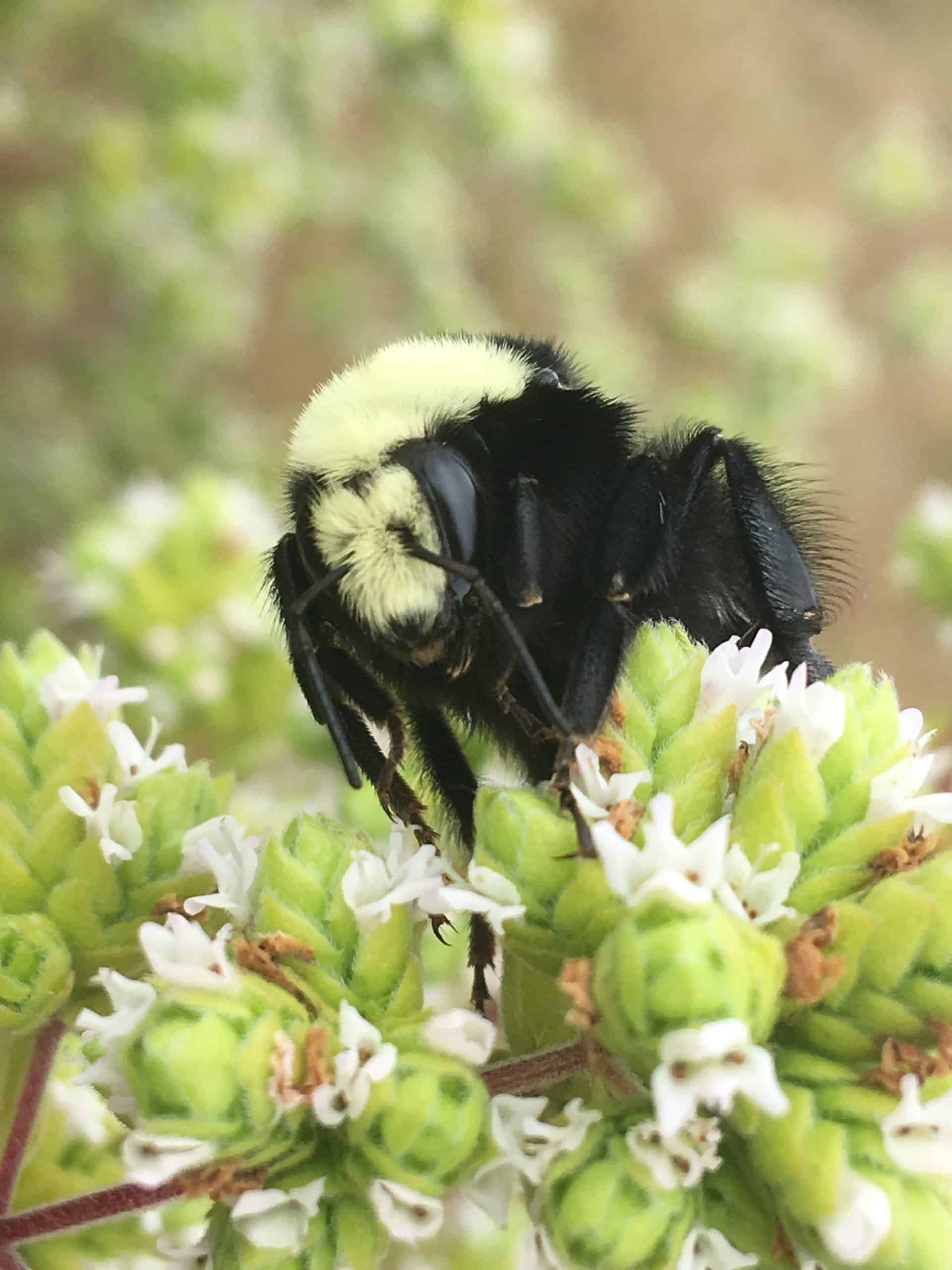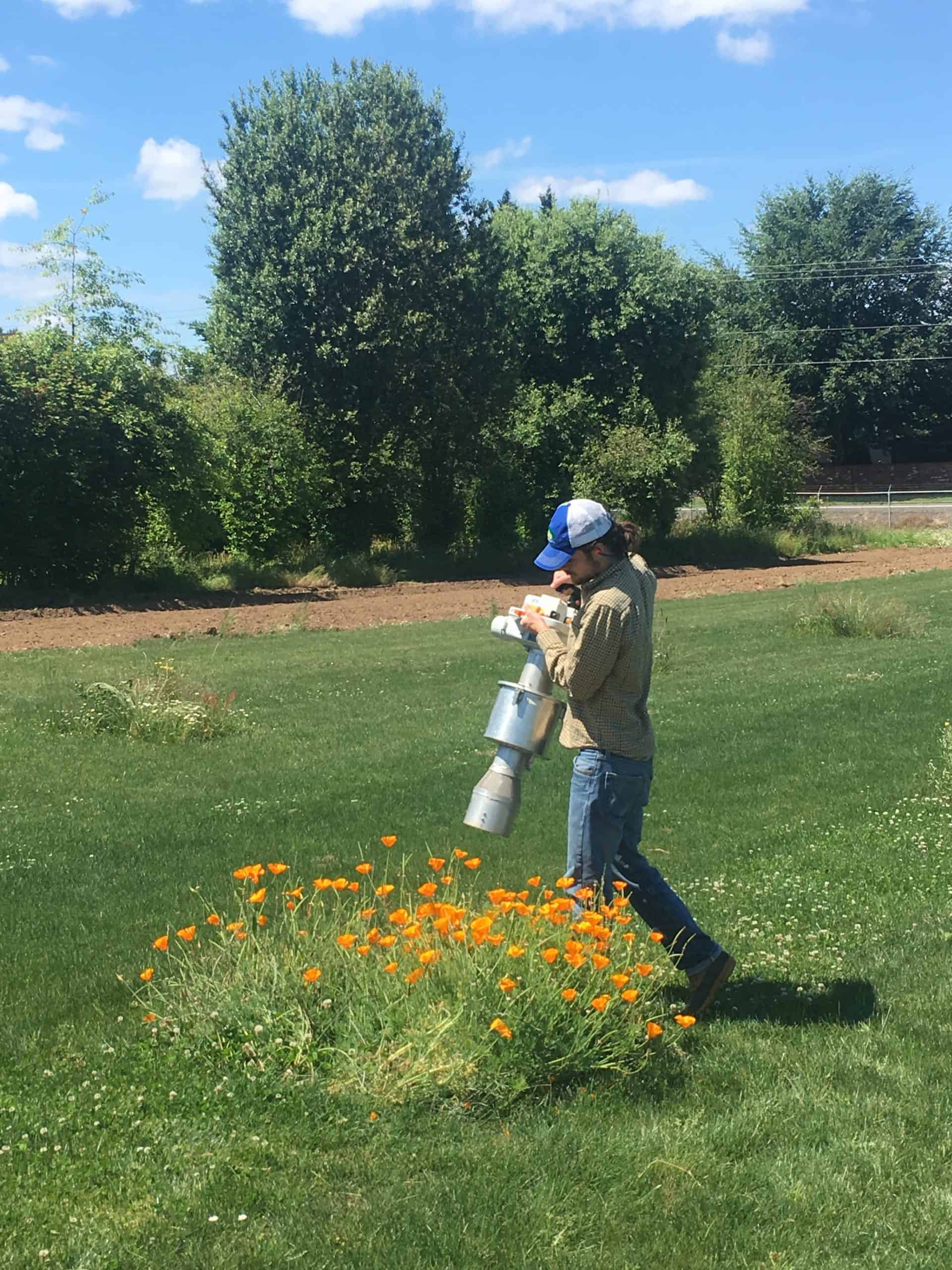Share this article
What gardens do bees prefer in the Pacific Northwest?
Native bees are declining across the U.S. due to factors like pesticide use, habitat loss and climate change. But little is known about the habitat needs and plant preferences of more than 4,000 native bee species in the U.S.
To help conserve the pollinators, some people take small steps in their own gardens or lawns to promote bee habitat. But many plants recommended for promoting pollinator health are generalized across the country rather than region specific.
When biologist Aaron Anderson was a PhD student at Oregon State University, he and his colleagues wanted to learn more about what kind of plants best promoted bee diversity in the Pacific Northwest. In a study published recently in Conservation Science and Practice, they tested the best plants homeowners can use to promote bee diversity and abundance.

The yellow-faced bumblebee. Credit: Aaron Anderson
They set out to find a number of drought-resistant plants native to the area. They planted 23 species of native plants in square-meter plots at the North Willamette Research and Extension Center just south of Portland, Oregon. They also planted four nonnative species popular in gardens and known to attract bees: lavender (Lavandula X intermedia ‘Grosso’), catnip (Nepeta cataria), oregano (Origanum vulgare) and sage (Salvia elegans). They separated the 27 plots, placed in a random order, with buffers of rye grass and kept the plots free of weeds during the experiment. There was also one control plot. They then replicated this set up five times, for a total of 140 plots including five controls.
The team monitored the plots for bees for three weeks around peak bloom—one week before, one week during, and one week after for three field seasons. During this period, they conducted five-minute timed pollinator surveys, counting every pollinator that landed on a flower. In this study, this mostly meant bees, as well as a few moths, hoverflies and butterflies.
The researchers also used a special insect vacuum to suck bees up, and stored them in ethanol for later species identification.
The researchers placed the plants in categories from the most attractive to least attractive to the insects. Some of the best plants for pollinators, they found, included native plant species like Douglas aster (Symphyotrichum subspicatum), California poppy (Eschscholzia californica), Canada goldenrod (Solidago canadensis) and Oregon sunshine (Eriophyllum lanatum).
“Those are all great plants to plant for pollinators,” said Anderson, now at The Xerces Society for Invertebrate Conservation. “The fact that we had the highest species richness as well as abundance of these native bees on native flowers—I think that using native flowers is a great way to conserve native wildlife.”

Research Aaron Anderson vacuums up bees on a California poppy plot with a special survey tool.
Credit: OSU Garden Ecology Lab
Other plants had strong association with specific bees. The leafcutter bee Megachile brevis, for example is often associated strongly with a plant called farewell-to-spring (Clarkia amoena). The researchers saw these bees cutting disks out of the plant’s leaves, which they use to line their nests, as well as pollinating the flowers. “[The plant] was providing both food and habitat for these leafcutter bees,” Anderson said.
Nonnative plants were visited heavily by western honeybees (Apis mellifera), a nonnative species.
Anderson said that many of these nonnative plants show up on lists across the country recommended for pollinator health. This may be a problem because more of these plants may not provide resources for the native bees that people are interested in conserving. “This is a caution that just because you see lots of bees doesn’t mean that you are conserving the bees we most care about: wild bees,” Anderson said, adding that honeybees also put scent marks on the flowers they visit—which may deter other species.
The researchers also surveyed gardeners to determine which species they thought were the most attractive to use in their yards, including a subset of plants that they found were very attractive to pollinators.
Unfortunately, they didn’t find much overlap between species most important for native bees and species that are popular with gardeners. But the surveys also revealed that many gardeners paid attention to the new recommendations from this study.
“Home gardeners were significantly more likely to plant these plants once they learned the benefits to native species,” Anderson said. “It shows the power that outreach and education provides.”
To further their efforts for education, they put the info up on a website catering to gardeners in Oregon.







